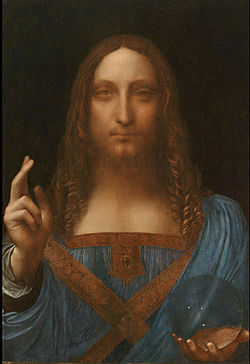
Saviour of the World

The Saviour of the world refers to Jesus Christ in Christianity and his redemption of sinners in the world. The belief that Jesus Christ was crucified on the cross and he rose again from the dead to provide redemption to all the world led to the creation of the term Saviour of the world.
The Biblical origin of the term can be traced to the verse in John ” He sent his only son to the world, even to the cross to die, his body to be broken, his blood to be shed, so that whosoever believeth in him should not perish but have everlasting life.
This Gospel message puts across the ideology of Jesus Christ being a redeemer and the Saviour of the world.
Salvator Mundi, Latin for Saviour of the World, is a subject in iconography depicting Christ with his right hand raised in blessing and his left hand holding an orb surmounted by a cross, known as a globus cruciger. The latter symbolizes the Earth, and the whole composition has strong eschatological undertones.
The theme was made popular by Northern painters such as Jan van Eyck, Hans Memling, and Albrecht Dürer. There are also several versions of the theme attributed to Titian, notably the one in the Hermitage Museum. A painting of the subject has been attributed to Leonardo da Vinci in 2011.